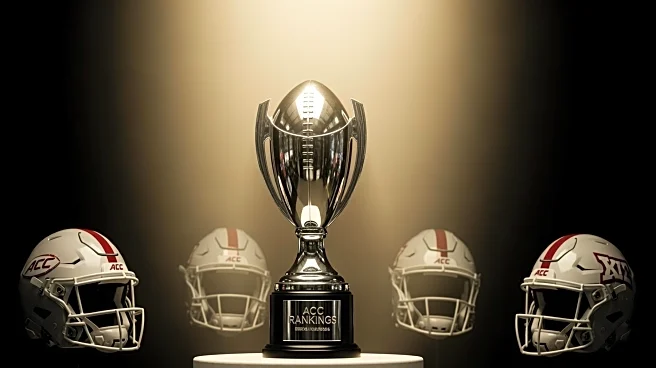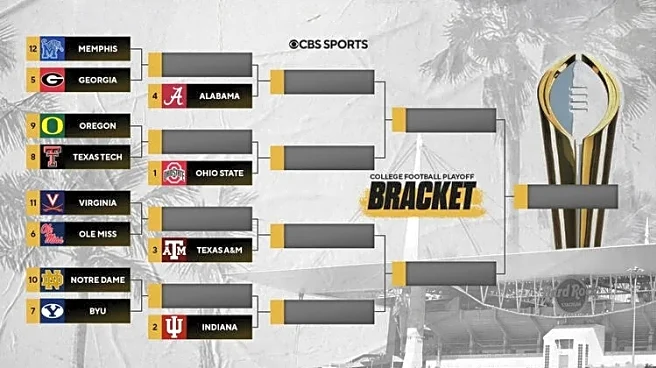What's Happening?
The College Football Playoff Committee has released its first set of rankings, highlighting the dominance of the SEC and Big Ten conferences. Texas A&M is the only undefeated SEC team, while Ole Miss also
holds a strong position. The rankings have sparked controversy, particularly regarding the ACC, with Miami placed at 18 despite having two losses. The committee's decisions have significant implications for teams like BYU, which remains undefeated and is positioned for a potential playoff bid. The rankings also show Notre Dame at No. 10, despite not having notable victories, while Miami's chances of making the playoffs appear slim due to their placement.
Why It's Important?
The rankings are crucial as they determine which teams will compete in the College Football Playoff, impacting the financial and reputational stakes for universities involved. The SEC's strong presence in the rankings underscores its influence in college football, potentially affecting TV ratings and sponsorship deals. The ACC's lower rankings could diminish its visibility and attractiveness to recruits and sponsors. Teams like BYU and Texas Tech, which are positioned well, stand to gain significant exposure and potential playoff opportunities, enhancing their programs' prestige and financial prospects.
What's Next?
As the season progresses, teams will continue to vie for better positions in the rankings, with upcoming games serving as critical tests. The committee's decisions will be closely watched, especially regarding any shifts in rankings due to game outcomes or injuries. Teams like Miami will need to perform exceptionally in remaining games to improve their playoff chances. The rankings will likely evolve, reflecting the dynamic nature of college football and the committee's ongoing evaluations.
Beyond the Headlines
The committee's rankings reveal underlying biases and preferences, potentially influencing public perception and media narratives around college football. The emphasis on certain conferences over others may lead to discussions about fairness and the criteria used for rankings. This could spark debates about the structure of college football playoffs and the representation of different conferences.














